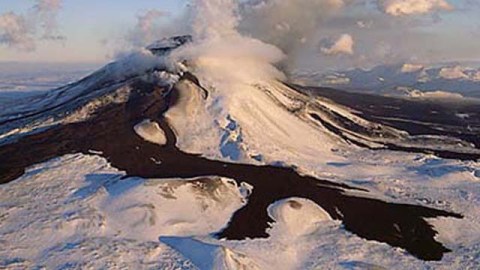Signs of unrest at Iceland’s Hekla – but what do the signs mean?

It seems that our attention is being brought back to Iceland every few months when it comes to volcanism – and this shouldn’t be any surprise, the north Atlantic island is one of the most magmatically active places on the planet.
The latest news from Iceland comes from Hekla. The volcano is one of the most active volcanoes on the island, rising almost 1,500 meters over sea level. However, unlike a lot of other Icelandic volcanoes that erupt basaltic magmas, Hekla has a history of more silicic eruptions (namely basaltic andesite or even more silica-rich up to rhyolite) that have deposited tephras across the landscape and produced pyroclastic flows (along with the more typical lava flows). Just skimming over the history of Hekla, it has a past littered with VEI 2-4 eruptions (and as high as VEI 5, including the ~1100 BC “Hekla 3” eruption) over the past few hundred years, including an impressive eruption last in 2000.
So, when any volcano with a volatile history like this shows any signs of unrest, it is newsworthy. It appears that a new GPS system has capture slight changes in the shape of the volcano that betray the movement of magma beneath the surface at the volcano. This has, of course, put the media in a frenzy, especially after the eruption of Grimsvötn this spring. This isn’t helped by Dr. Pall Einarsson (likely unfortunate) quote that Hekla is “ready to erupt“. At this point, it is unclear what these data suggest about the activity at Hekla – clearly magma is moving at depth, but does this mean an eruption is imminent? As Dr. Einarsson points out, Hekla usually gives little-to-no warning before erupting. The big “however” here is that Hekla has new monitoring equipment, namely this GPS system, so now we can watch every minute change in the volcano, something not possible 10 years ago. Are we seeing the opening signs of a new eruption or is this normal behavior for a volcano with an active magmatic system (which is common in Iceland) between eruptions? That is what we will find out in the coming weeks – and there is a lot of knowledge of the potential hazards (pdf) of a Hekla eruption.
In any case, it should be reassuring to the people of Iceland (and Europe) that many of these Icelandic volcanoes are so closely monitored so we can see these small changes in their behavior. The million dollar question is how we can interpret these volcano monitoring data – is the volcano going to erupt tomorrow, next week, 5 years from now? Unfortunately, we just don’t have the experience yet to know what the changes being seen at Hekla mean in terms of the timing of an eruption. Hekla will erupt again, that there is no doubt, but what this new information on the deformation of the volcano mean is still unknown.
UPDATE: Leave it to the Daily Mail to take the Hekla-mongering to its illogical conclusion: “Is an even bigger ash cloud set to blanket our skies? Iceland’s most feared volcano ‘ready to erupt'” Well, I guess you might say Fox News topped the Daily Mail: “Iceland ‘Gateway to Hell’ Volcano to Erupt Again, Experts Say.” Not only does the headline not name the volcano, but then it is completely vague. Sigh.
If Hekla does actually head towards eruption, you can watch the results on one of the webcams for the volcanoes. Another perk of Icelandic volcanism.
Top left: The aftermath of the 2000 lava flows from Hekla in Iceland.





